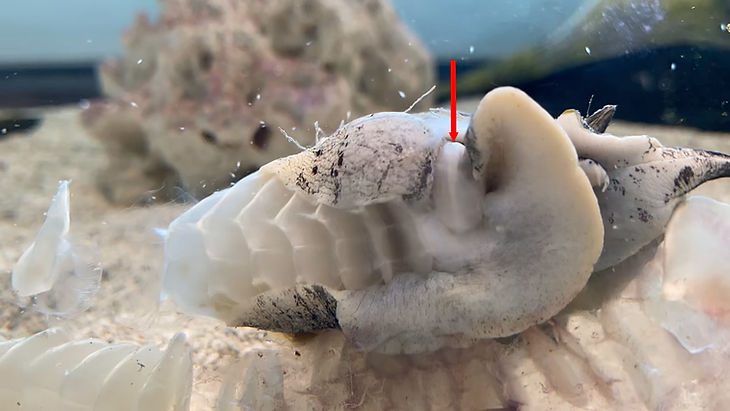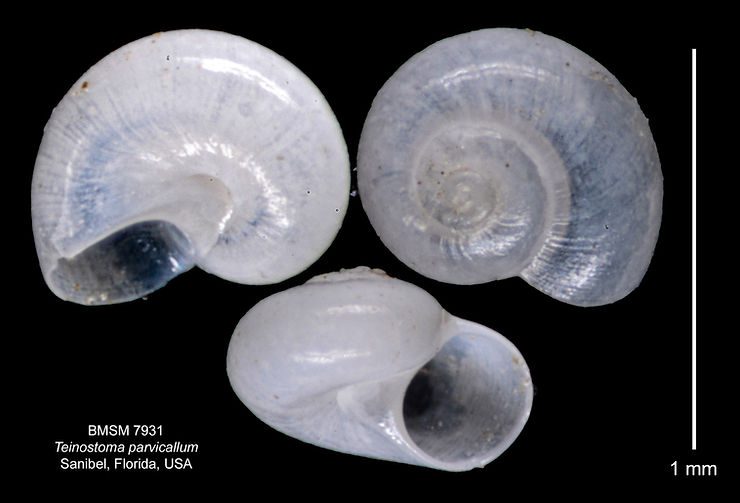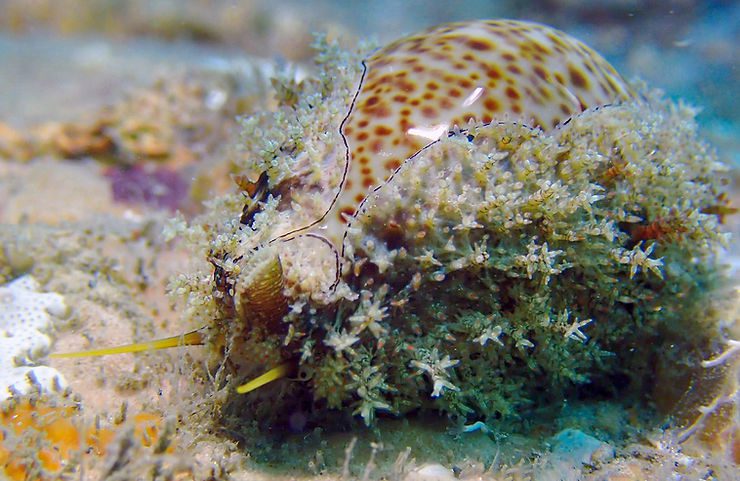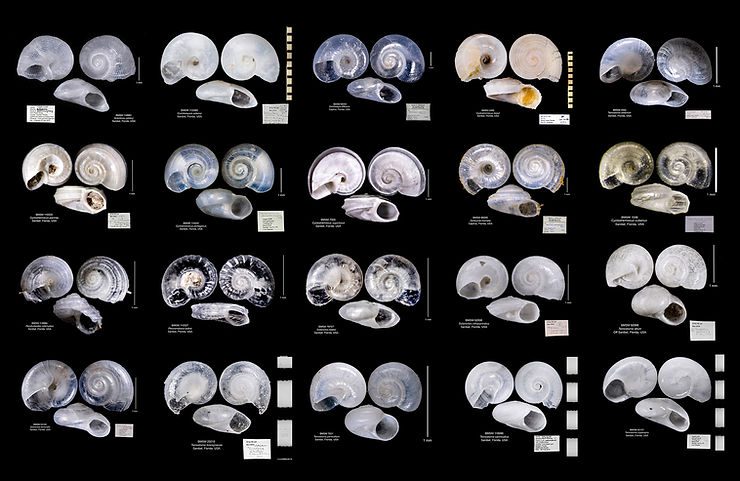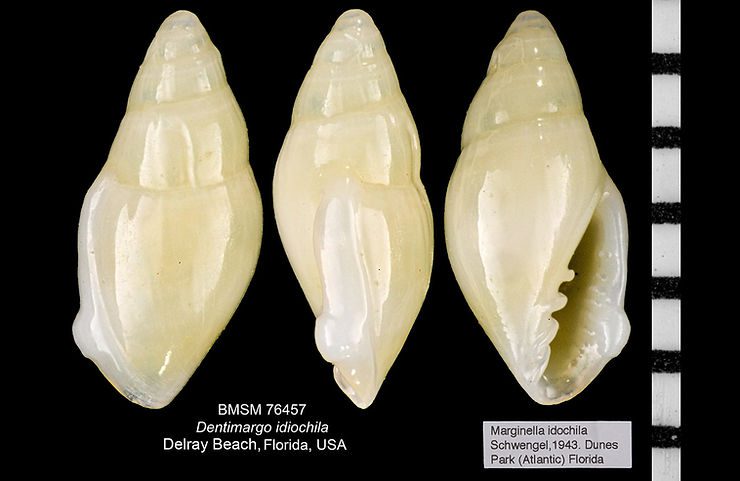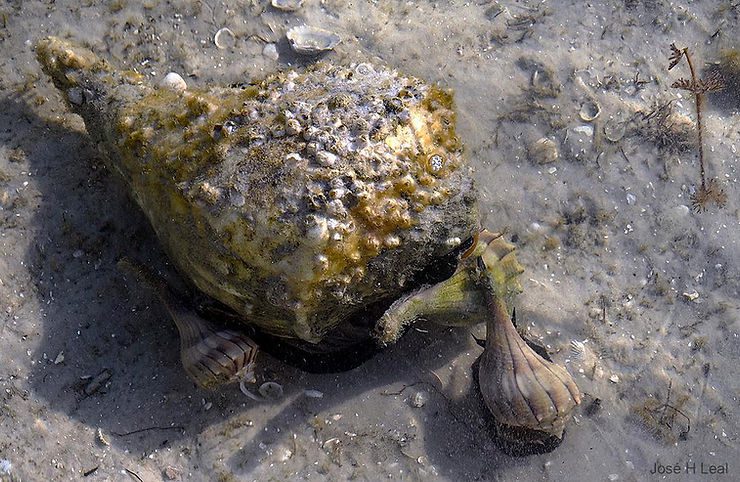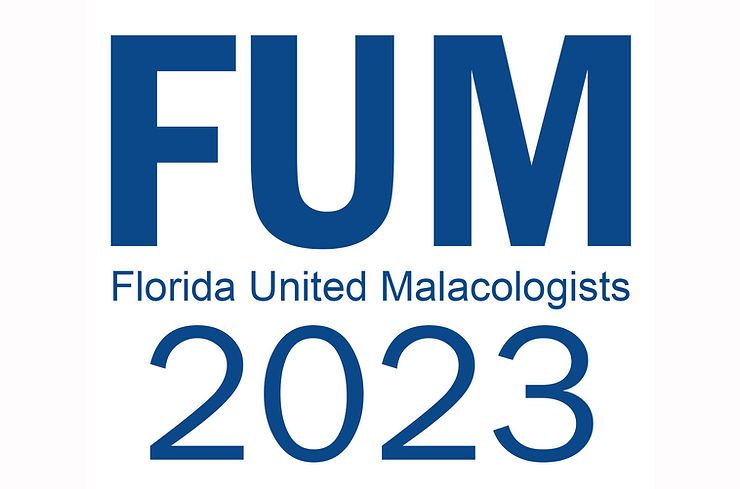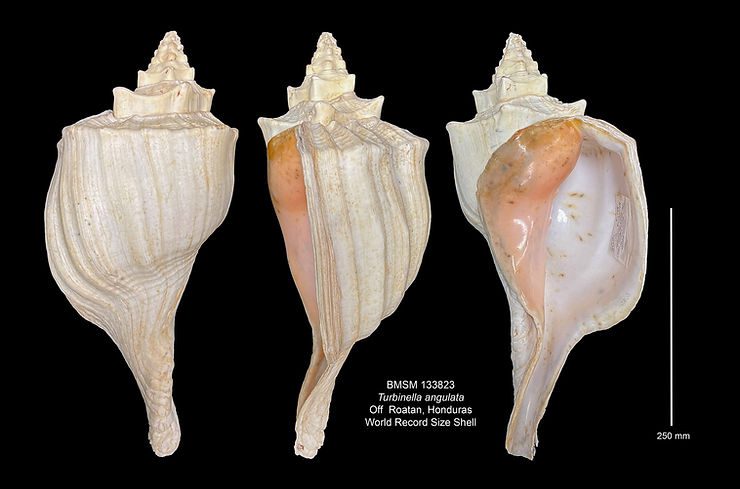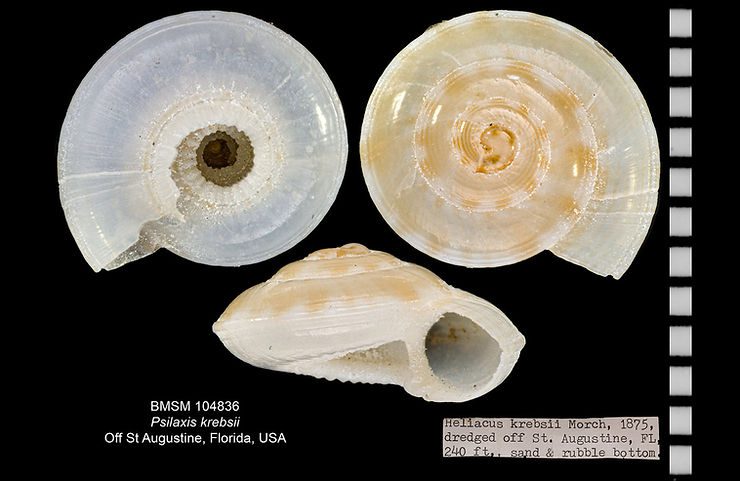
Shell of the Week: The Smooth Sundial
Psilaxis krebsii (Mörch, 1875) is a marine snail of the sundial family Architectonicidae that may reach about 14 mm (about 0.5 inch) in diameter. The characteristic “UFO-shaped” shell has slightly convex whorls; the shell surface is basically smooth, except for very weak spiral cords near the shell periphery (the “outer rim” of the shell) and a prominent cord at the periphery. The umbilicus is wide and deep, with the “staircase-like” edge that is typical of many sundial species. The background c
